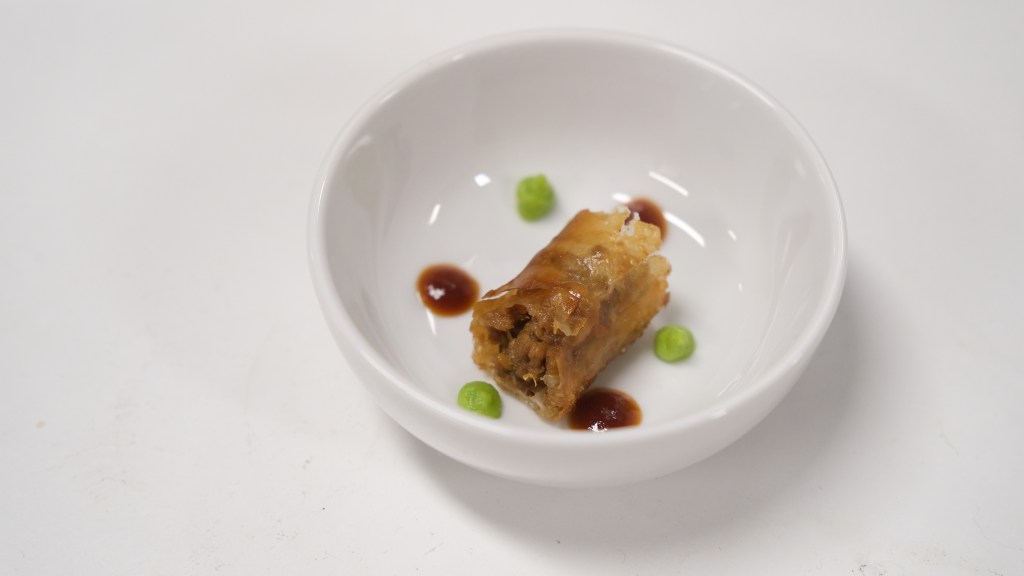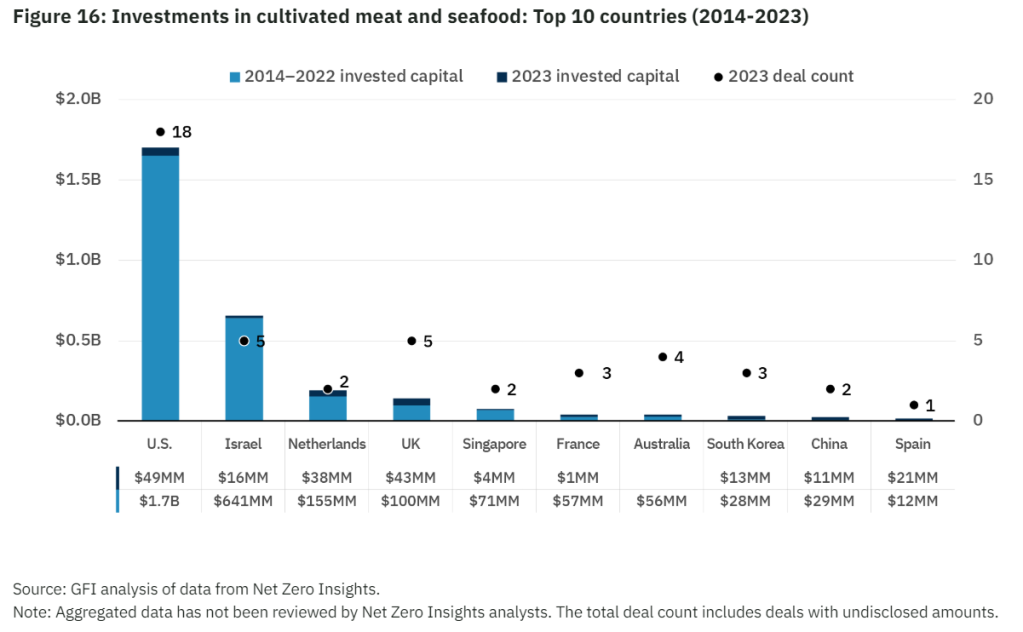In line with its recently launched research on the plant-based and fermentation sectors, the Good Food Institute (GFI) has released its cultivated meat and seafood state of the industry report.
The Cultivated meat and seafood 2023 report details the status of investment, technology, and sales for the cultivated sector. Cellular Agriculture Australia defines cultivated meat — also known as cultured meat or cell cultivation — as a form of cellular agriculture that uses cells and biotechnologies to produce meat, seafood, dairy proteins, and fats.

According to GFI, cultivated meat and seafood companies raised $225.9 million globally in 2023, bringing the total for the industry (since 2013) to $3.1 billion. That’s a sizable decline from the $922.3 million raised in 2022, which GFI notes mirrors trends in the broader tepid private funding environment.
Despite the drop in investment, the global number of publicly announced cultivated meat companies (focused primarily on cultivated meat inputs or end products) rose to 174 in 2023 from 166 in 2022.
As of the end of 2023, Australia had six cultivated meat companies and New Zealand had one, the US and Israel leading at 45 and 19, respectively.

GFI also identified the trend of an increasing number of companies focusing on the cultivated meat value chain beyond end-product manufacturing, with at least 50 companies identifying as focused on bioprocess design, cell line development, and cell culture media.
Meanwhile, 10 new cultivated meat facilities opened across the world, including two large-scale plants—Mosa Meat’s 30,000-square-foot facility in the Netherlands and CellX’s factory in Shanghai.
GFI also highlighted the addressing of nomenclature issue and discrepancy between industry-accepted terms such as “cultivated meat” and terms used by media like “cell-cultured” and “lab grown” in 2023. Consumer research supports “cultivated” as the “ideal name in terms of appeal, clarity, comfort seeing it on packaging, and expected personal use for consumers.”

The state of cultivated meat in ANZ in 2023
According to GFI, Australia was ranked seventh in total all-time investment (from 2014 to 2013) in cultivated meat and seafood, a significant drop from the third spot in 2022, with a total of $56MM in funds raised. The country was also the only one in the top ten to record no notable investment in 2023.

However, while the GFI report shows that 2023 was a stagnant year for cultivated meat in Australia in terms of funding, the country still showed progress in terms of scaling the technology and its regulatory situation.
Australia’s Magic Valley expanded operations in a new pilot facility that the company claimed had 3,000 liters of bioreactor capacity that can produce 150,000 kilograms of product per year.

2023 was also a significant year for regulation of cultivated meat, as Vow became the first cultivated firm to apply to Food Standards Australia New Zealand (FSANZ) for approval. FSANZ’s assessment of Vow’s cultured quail cells found it to be safe as a novel food, the regulator since moving on to the public consultation stage.
To stay up-to-date on the latest industry headlines, sign up to Future Alternative’s enewsletter.
Posted on:


